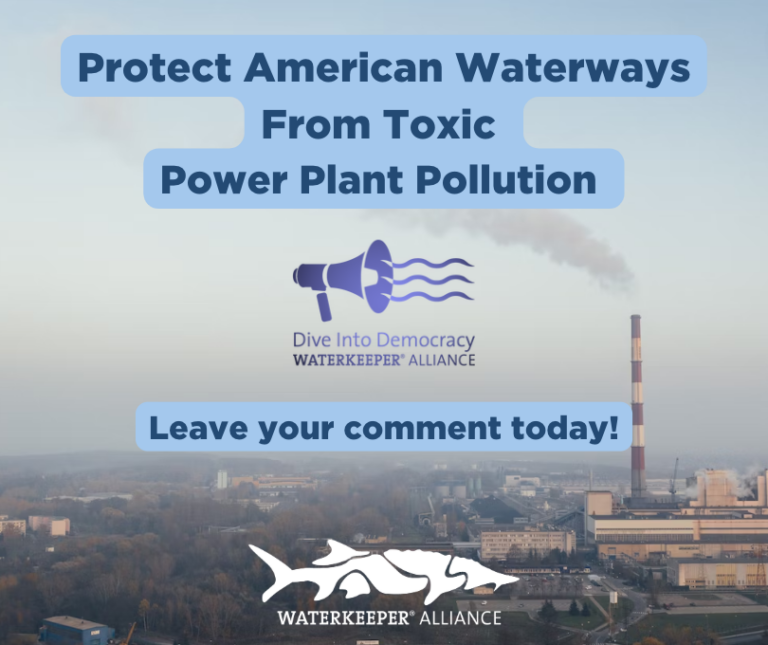Help Protect American Communities, Air, and Waters From Toxic Power Plant Pollution!
By: Thomas Hynes

The United States Environmental Protection Agency (EPA) is proposing to strengthen Clean Air Act (CAA) controls on mercury and other toxic pollution emissions from power plants. This proposed rule will help protect the health of people living in communities where power plants are located and will also reduce the release of toxic pollutants like mercury, arsenic, lead, and chromium into our air, waterways, and ecosystems.
EPA is proposing to update and strengthen the CAA National Emission Standards for Hazardous Air Pollutants for Coal- and Oil-Fired Electric Utility Steam Generating Units , commonly known as the Mercury and Air Toxics Standards (MATS) rule for power plants, to reflect new technologies, reduce emissions, eliminate regulatory loopholes, and require continuous monitoring of air releases of hazardous pollutants.
This proposal is the most significant improvement and update to MATS rule since these national limits on mercury and toxic air pollution were first adopted in 2012. Since going into effect, the standards have significantly reduced hazardous air pollution from power plants which is believed to have prevented between 4,200 and 11,000 premature deaths annually since 2016. These updated standards recognize that power plants need to do more and that new technology exists to reduce and monitor this dangerous pollution.
Will you take a moment to encourage EPA to protect American air, waters, and communities from mercury and other toxic power plant pollutants by finalizing the strongest possible Mercury and Toxic Air Standards?
Mercury is a dangerous neurotoxin. High levels of exposure can damage the kidneys, liver, and immune system. Mercury is particularly harmful to pregnant women. Power plants, including coal-powered plants, are the primary source of mercury contamination. When airborne mercury falls out of the air, it often ends up in the water. From there it makes its way into the food chain and bioaccumulates in fish and other aquatic species such that larger food fish, like tuna, can contain dangerously high levels of mercury that endanger people that consume a lot of fish or eat fish on a regular basis. Mercury is also very persistent, meaning that it remains in the ecosystem for a long time so it is essential that this pollution is prevented at the source.
Thankfully, in 2012, EPA finalized the first ever standards requiring coal- and oil-fired power plants to reduce mercury and other toxic pollutant emissions into the air. The Mercury and Air Toxic Standards worked to reduce toxic power plant emissions. For example, mercury emissions from power plants were reported to be 90 percent lower in 2021 as compared to pre-MATS levels. The MATS rule also reduced emissions of other toxic metals, like arsenic, chromium, and nickel that can cause cancer, as well as particulate matter that can cause heart attacks, bronchitis, and asthma attacks and acid gasses that can damage lungs and lead to chronic respiratory disease, particularly in children and the elderly. Each year, thousands of premature deaths were averted, as were thousands of heart attacks and asthma attacks.
EPA’s current proposal builds upon the highly successful and cost-effective health protections in the MATS rule and would:
- Set stricter limits on emissions of filterable particulate matter to substantially reduce releases of non-mercury hazardous air pollutant metals from existing coal-fired power plants.
- Tighten the limit on mercury emissions by 70 percent for a particular type of existing coal-fired power plant to bring it in line with mercury limits placed on other plants.
- Eliminate two regulatory loopholes that are used by some power plants to exceed emissions limits.
- Require power plants to use continuous emission monitoring systems that will provide regulators, the public, and facility owners or operators with cost effective, real-time data about the amount of pollution being released and help improve power plant and pollution control operations to further reduce air pollution.
This is our opportunity to keep mercury and other toxic power plant pollution out of our water, our air, and our communities. Your support can help encourage EPA to finalize a MATS rule that includes the strongest possible protections against mercury and other toxic air pollution from power plants.
Leave your comment today in favor of healthy air, waterways, and communities.